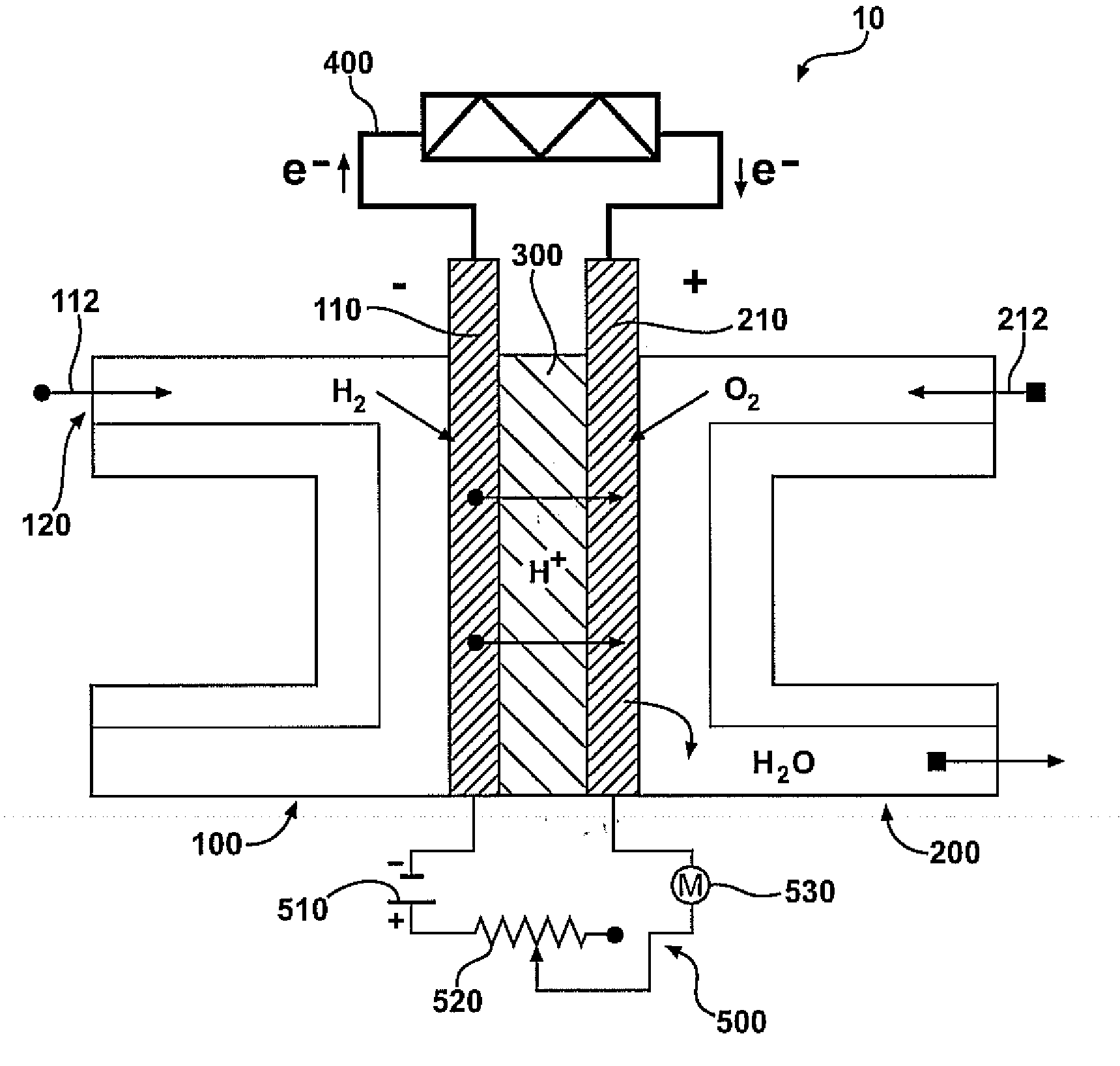Rapid response sensor for carbon monoxide
a carbon monoxide and response sensor technology, applied in the field of chemical analysis, can solve the problems of inefficiency of catalysts used to initiate and/or enhance chemical and/or electrochemical reactions, add to the bulk and complexity of the system, and inability to respond robustly, and achieve the effect of reducing the number of reactions
- Summary
- Abstract
- Description
- Claims
- Application Information
AI Technical Summary
Benefits of technology
Problems solved by technology
Method used
Image
Examples
Embodiment Construction
[0014]A stimulus-response approach for anomaly detection involving symbolic dynamics and finite state machine construction or peak-to-asymtotic voltage variation has been applied to develop a carbon monoxide (CO) sensor. The sensor may be calibrated using known levels of CO impurity. An anomaly measure is determined to quantify and detect changes in the CO composition from the nominal condition of no CO impurity in a fuel stream. Growth of the anomaly corresponds to an increase of CO ppm in the fuel flow, and if a surface such as an anode is present, subsequent anode surface poisoning. Online determination of the state of an anode catalyst health (CO ppm) using this anomaly detection methodology is used for intelligent control and mitigation of CO damage in fuel cell or other systems.
[0015]Turning to FIG. 1, a schematic representation of a fuel cell is shown generally at 10. The fuel cell 10 has an anode side 100 and a cathode side 200. The anode side 100 includes an anode 110 and a...
PUM
| Property | Measurement | Unit |
|---|---|---|
| time period | aaaaa | aaaaa |
| time period | aaaaa | aaaaa |
| time | aaaaa | aaaaa |
Abstract
Description
Claims
Application Information
 Login to View More
Login to View More - R&D
- Intellectual Property
- Life Sciences
- Materials
- Tech Scout
- Unparalleled Data Quality
- Higher Quality Content
- 60% Fewer Hallucinations
Browse by: Latest US Patents, China's latest patents, Technical Efficacy Thesaurus, Application Domain, Technology Topic, Popular Technical Reports.
© 2025 PatSnap. All rights reserved.Legal|Privacy policy|Modern Slavery Act Transparency Statement|Sitemap|About US| Contact US: help@patsnap.com



